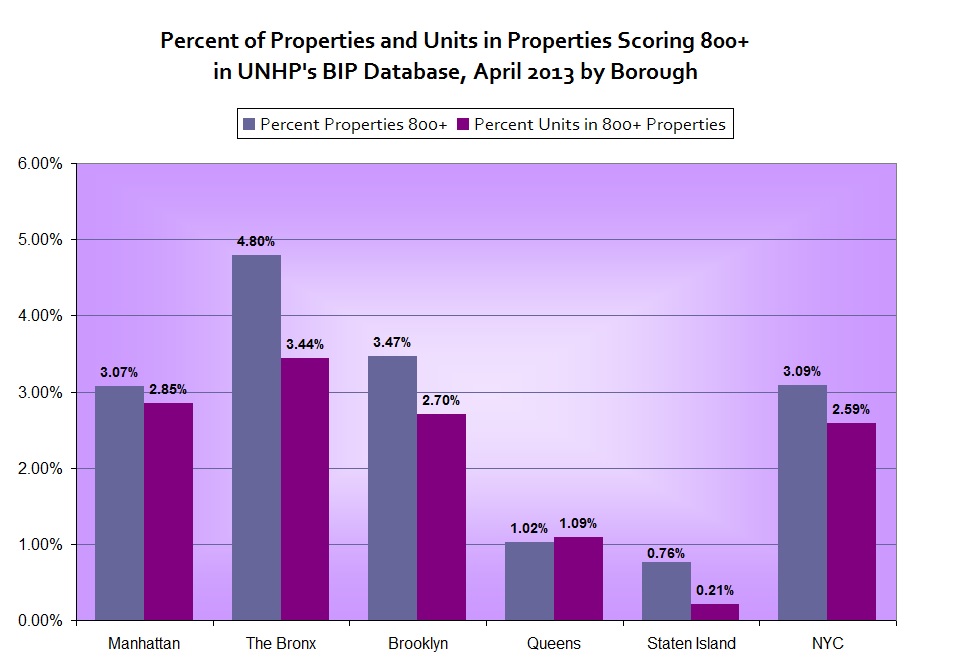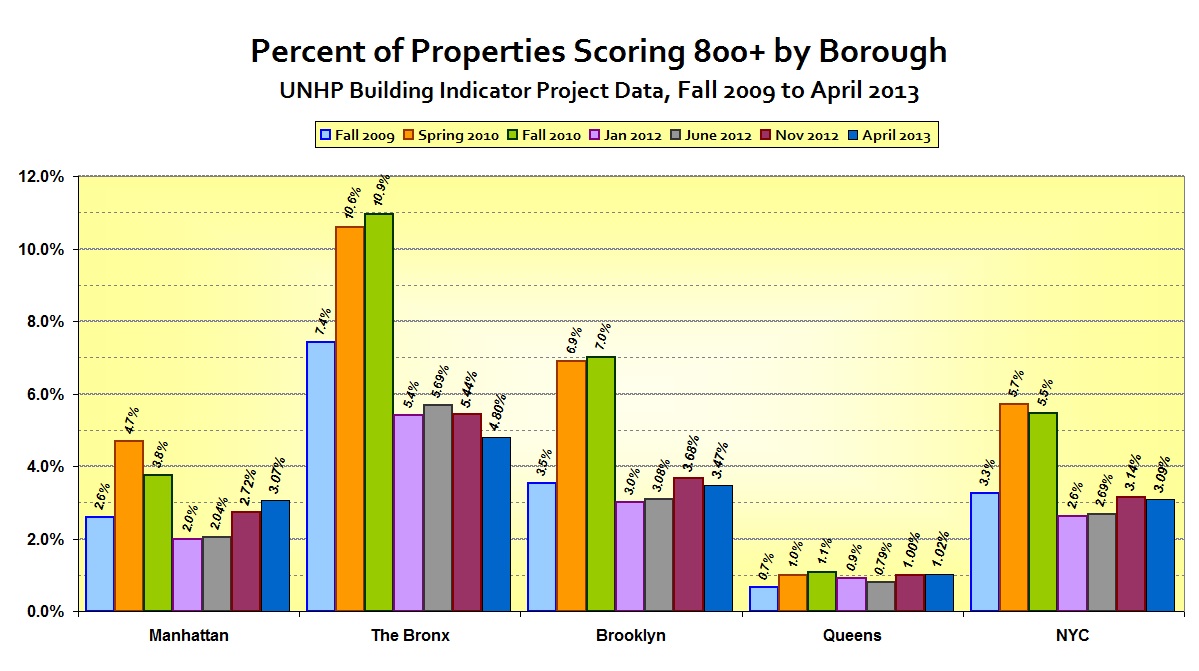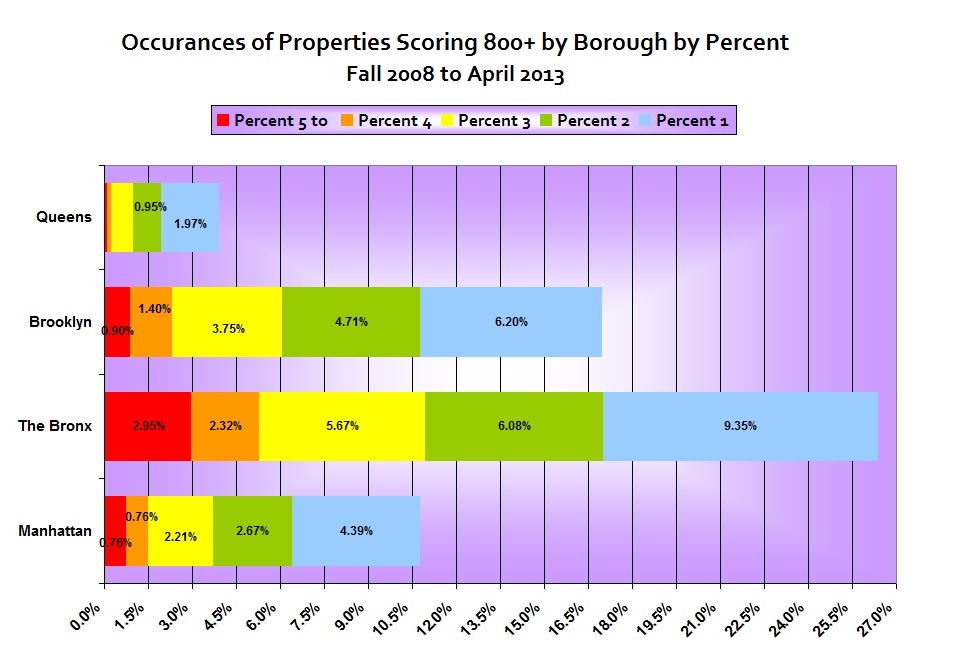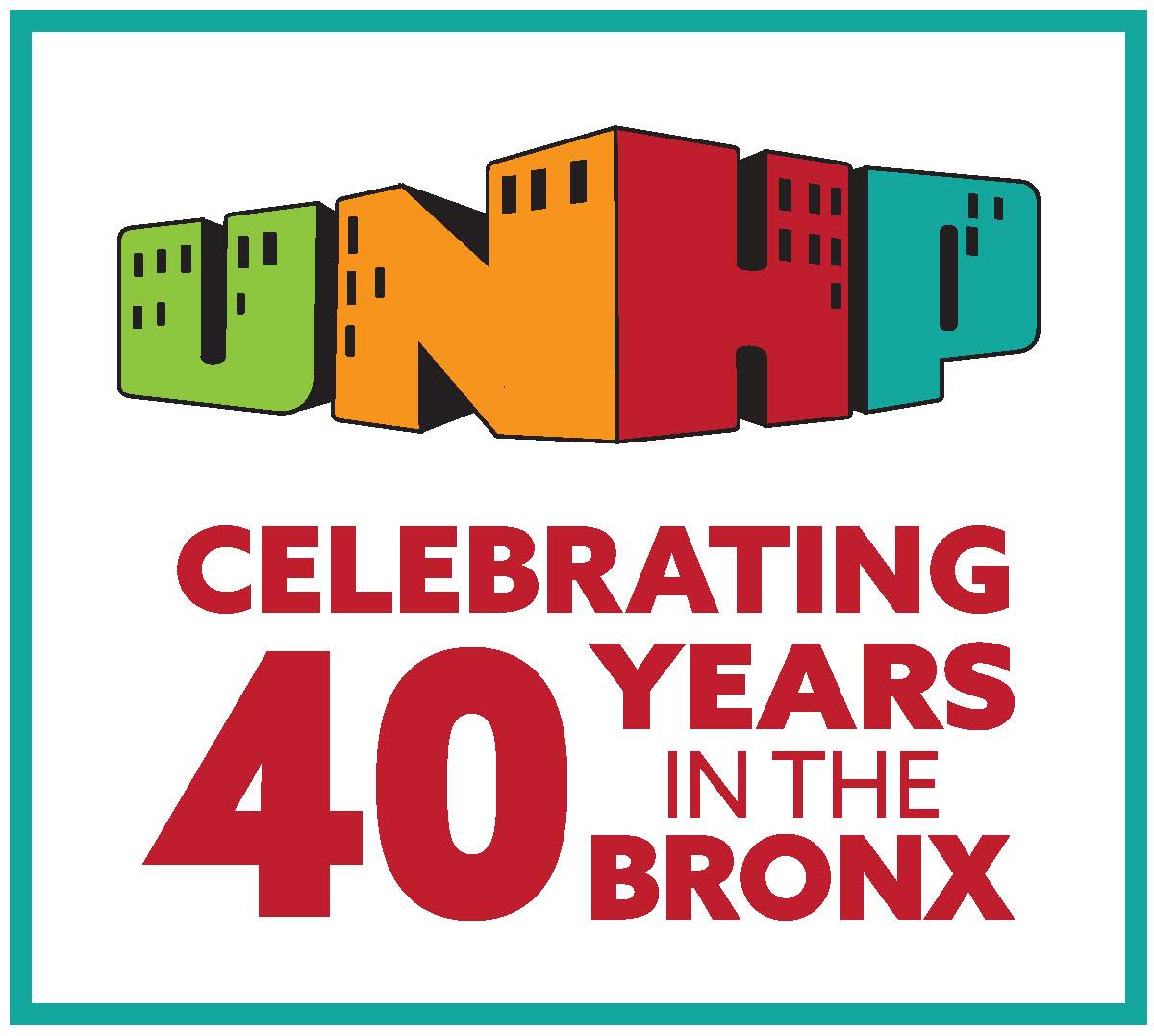Highlights from New BIP Data!
The new BIP data is here from April 2013. The Building Indicator Project database was developed by UNHP to identify multifamily properties in physical and/or financial distress. It uses a weighted scoring system that draws on housing and building code violations, city liens, and other building information; a score above 800 points signifies a property likely to be distressed. UNHP uses this data to outreach to multifamily lenders regarding improving the status of the properties in their portfolios and to hold them accountable. We also share this data with HPD and nonprofit community groups to help with research, organizing, and advocacy.

This year, we analyzed buildings in Staten Island to include in the BIP database for the first time. Of the 526 properties, only 4 scored higher than 800. This percentage of properties likely to be distressed, 0.76%, is the lowest of the five boroughs.

The Bronx continues to have the highest proportion of properties and units scoring above 800. However this number has dropped (for the second time in a row) from 5.4% in November 2012 to 4.8% in April. While these numbers seem encouraging, Manhattan tells the opposite story with three consecutive increases. Overall, the percentage of buildings in the city that are likely distressed has remained almost constant since November.

The Bronx also shows the highest occurrence of properties likely to be distressed. Only six buildings have scored over 800 points every time we have run the data (9 times) and 5 of those properties are from the Bronx.
UNHP has worked to increase the number of banks who participate in the Multifamily Assistance Center and use the BIP data. The number of banks that attend our yearly Multifamily Assistance Center meetings has increased from nine banks in 2010 to twenty-one banks in 2013. More significantly, a number of banks have incorporated the use of the BIP data into their asset management review and have become more engaged with HPD and community groups around improving distressed properties through our work.In the period from June 2012 through April 2013, of the properties that scored over 800, there was an improvement of 200 or more points in 1,060 properties with 52,373 units. There was a 59% improvement in distressed buildings where we worked with the lender versus a 39% improvement in buildings where we don’t have a relationship with the lender.


